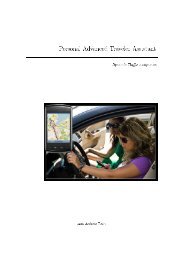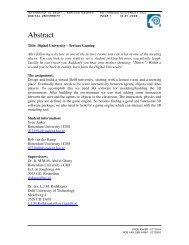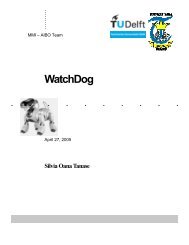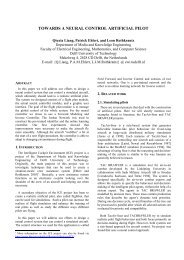Recognition of facial expressions - Knowledge Based Systems ...
Recognition of facial expressions - Knowledge Based Systems ...
Recognition of facial expressions - Knowledge Based Systems ...
Create successful ePaper yourself
Turn your PDF publications into a flip-book with our unique Google optimized e-Paper software.
- renormalize the w<br />
ijk<br />
to assure that:<br />
o = 1<br />
j<br />
w<br />
ijk<br />
o 0 w ≤ 1<br />
< ijk<br />
Learning in Bayes Nets<br />
There are several variants for learning in BBN. The network structure might be known or<br />
unknown. In addition to this, the training examples might provide values <strong>of</strong> all network<br />
variables, or just a part. If the structure is known and the variables are partially<br />
observable, the learning procedure in BBN is similar to training neural network with<br />
hidden units. By using gradient ascent, the network can learn conditional probability<br />
tables. The mechanism is converging to the network h that locally maximizes P(D | h).<br />
Complexity<br />
- The computational complexity is exponential in the size <strong>of</strong> the loop cut set, as we<br />
must generate and propagate a BBN for each combination <strong>of</strong> states <strong>of</strong> the loop cut<br />
set.<br />
- The identification <strong>of</strong> the minimal loop cut set <strong>of</strong> a BBN is NP-hard, but heuristic<br />
methods exist to make it feasible.<br />
- The computational complexity is a common problem to all methods moving from<br />
polytrees to multiply connected graphs.<br />
Advantages<br />
- Capable <strong>of</strong> discovering causal relationships<br />
- Has probabilistic semantics for fitting the stochastic nature <strong>of</strong> both the biological<br />
processes & noisy experimentation<br />
- 38 -
















